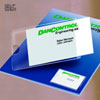Shopping Cart [more]
Index of Products
- 2x - 6x Magnifiers
- 7x - 9x Magnifiers
- 10x - 12x Magnifiers
- 15x - 22x Magnifiers
- 25x - 75x Magnifiers
- 100x plus Magnifiers
- ABC Loupe
- Accessories
- Achromatic
- Anastigmat
- Anilox Inspection with Video Camera
- Anilox Roll Scope
- Best Sellers
- Beta Industries
- Brinnel Microscopes
- Calibration
- Carson Optical, Inc.
- Color Viewers
- Custom Reticles
- Depth Measuring
- Dot Inspector Color Viewing Magnifier
- Electronic Ruler
- Endoscopes
- Enlarging Focuser
- Erect Image
- Eschenbach
- Eye Loupes
- Film Viewer
- Fixed Focus
- Flexible Stand Loupes
- Folding Loupes
- Folding Magnifiers
- Gaebel Magnifier & Optical Tools
- Glass Scale - Video Rulers
- Glass Scales
- Green-Lite LED Magnifiers
- Hand-Held Magnifiers
- Hardness Testers
- Head Loupe
- Ihara Densitometers
- Illuminated Loupes
- LED Magnifiers
- Linear Electronic Micrometer
- Linen Testers
- Lippolis
- Macro Measure USB Video
- Magnetic Magnifier
- Magnifiers (Handheld) With (Scales) Reticles
- Magnifiers With Lights
- Magnifiers With Video
- Micro Dottie
- Microfilm/35mm
- Microscopes
- Monocular
- O.C. White Products
- Ocular Micrometer
- Paragon
- Photographic
- Pocket Microscopes
- Promotional Printed Magnifiers
- Reticle Descriptions
- Reticles Custom Made
- Ruler and Targets Custom Design
- Rulers
- Scale Loupes
- Stage Micrometer
- Stand Microscope SKS
- Steinheil System
- Stereo Viewers
- Swing Base Loupes
- Telecentric Loupe
- Telescope
- Transparent Scale
- Triplet Loupe
- Video Inspection Systems
- Video Magnifiers
- Video Roll Inspection
- Wide Stand Microscope
- Zoom Loupe
- Featured Products ...
Information
Descriptions, Definitions, Recommendations
Types of Lenses Referenced below is some helpful technical information including lens types and terminology definitions. Use these guides in addition to the magnifiers recommendations below to help you choose the correct magnifier. |
 |
Simple
Positive Lens - A single piece of optical glass or acrylic with
two convex surfaces (curved outward). Designed for low magnification.
Simple Negative Lens - A single piece of optical glass or acrylic with two concave surfaces (curved inward). Used in conjunction with positive lenses. Achromatic Lens - A positive simple lens cemented to a negative simple lens. Achromatic lenses are corrected for two colors and produce flatter fields of view at higher powers. Double Lens - Two simple lenses used as a system but not cemented together. This system produces a far superior image than a simple lens. |
Technical Definitions Power: The number of times a lens or lenses multiplies an image with respect to the original size. Low power is recommended for scanning large surfaces. Higher powers are generally used for inspecting small areas. Field of View: The maximum area seen through a magnifier. The entire field of view may not be in focus. See Flatness of Field. Flatness of Field: Due to the physical laws of optics, the outer part of the image formed by a lens may be out of focus. The greater the power and curvature of the lens, the more pronounced this problem becomes. Magnifiers with multiple lenses can reduce this problem. The visible area which appears in focus is the flat field. Working Distance: The distance from the magnifier lens to the object being viewed. As magnification power increases, the working distance decreases. Aberration: This is a distortion caused by the lens. Spherical aberration is distortion of the image, as explained in Flatness of Field. Chromatic aberration is distortion of colors being viewed, as explained in Color Distortion. Color Distortion: Lenses produce a prism effect which causes the image to develop false color fringes. This is due to the fact that different colors focus at different points. Achromatic lenses correct this problem by focusing many colors at the same point. Parallax: Parallax is the apparent misalignment of two different items when viewed from an angle. It is the cause of improper registration when stripping multiple color jobs. Parallax is eliminated when viewing straight down on registration marks instead of from a slight angle. Coated Lens: A coated lens helps to minimize or eliminate color distortion caused by different colors focusing at different locations. Optimum color viewing is obtained from coated achromatic lenses. |
Magnifier Recommendations
|
|
Other products and companies referred to herein are trademarks or registered trademarks of their respective companies.
**Prices, images and specifications subject to change without notice.**


For your convenience, we accept these credit cards:











